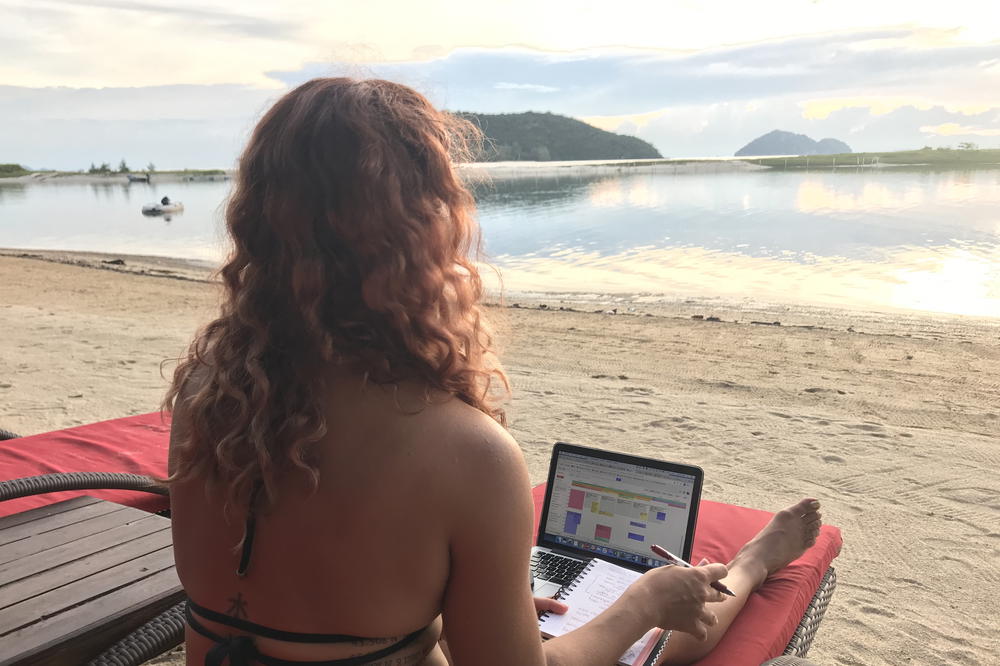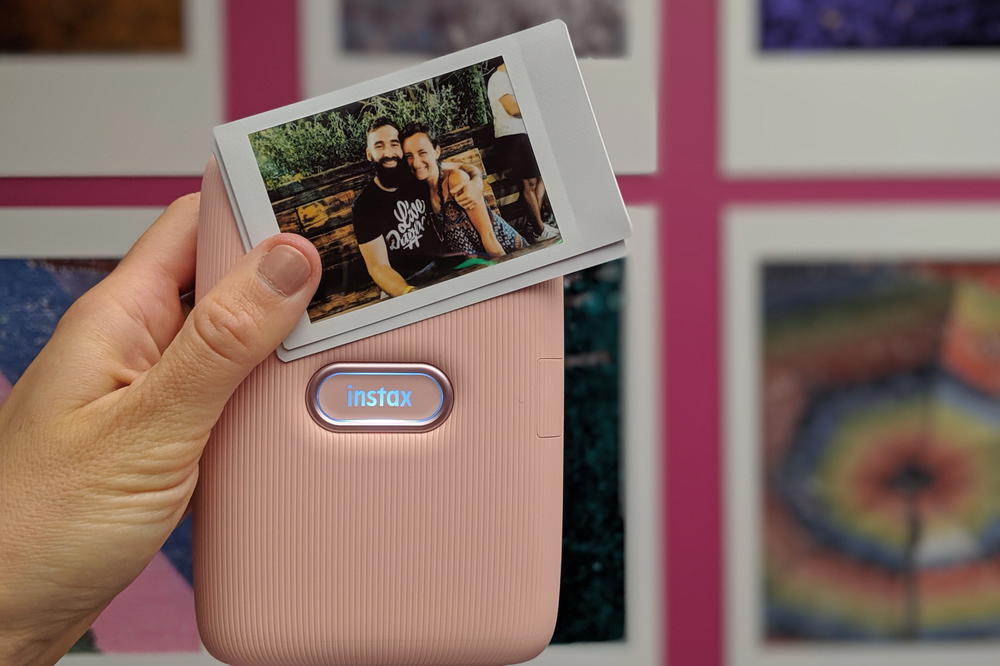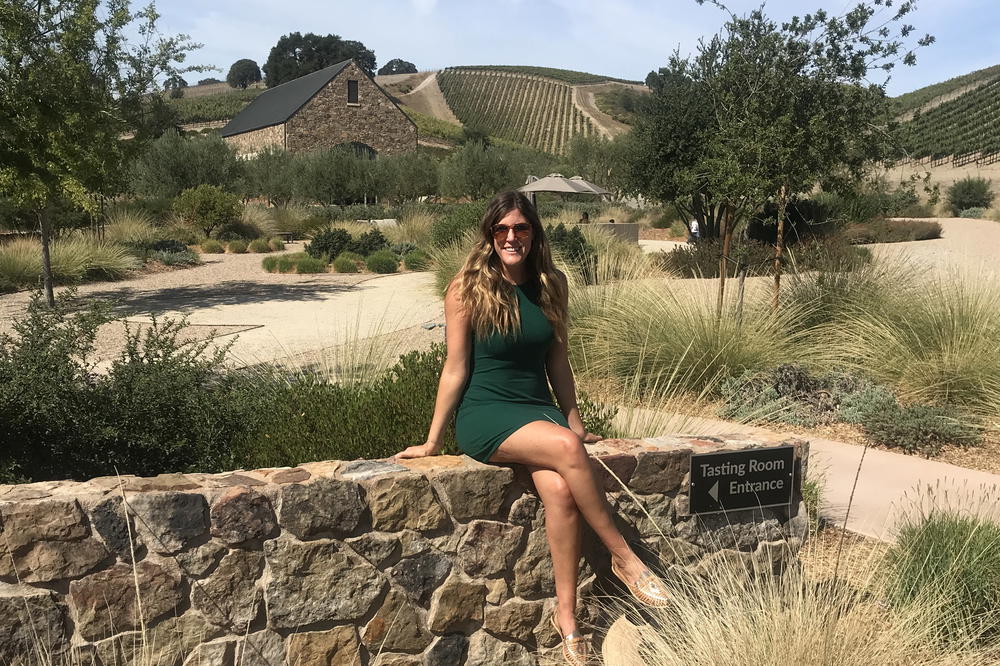Carlie & Pat: Off-the-Beaten Path Van Life Travel
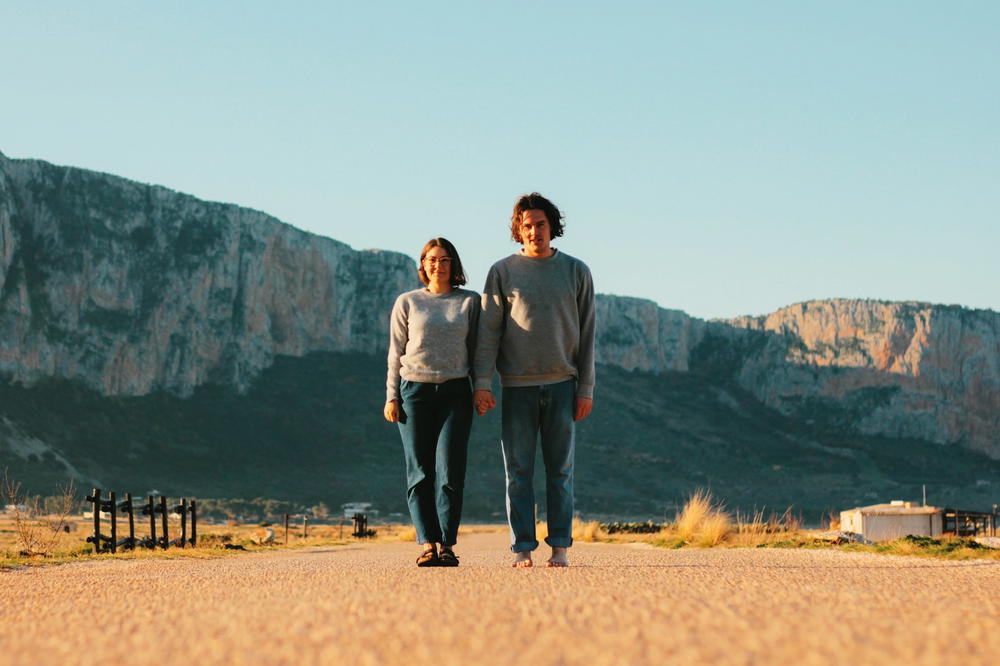
What's it like to take a big trip as a couple in a campervan? Carlie and Pat of @verynicetravels told us how to do a 'van life' trip across Europe, and how to deal with unexpected turns during travel.
This article may contain affiliate links. We earn a small commission when you purchase via those links — at no extra cost to you. It's only us (Becca & Dan) working on this website, so we value your support! Read our privacy policy and learn more about us.
True to both of our personal brands, I (Becca) met Pat in May 2014 in Sucre, Bolivia, on a backpacking trip with one of my best friends.
Pat, a true adventurer, was traveling alone at age 23, and a few of us spent a beautiful (and dry — Bolivia is crazy dry) afternoon climbing up to the roof of the city’s main government building for some beautiful and memorable photos.
As if it couldn’t be any more fitting, Pat and I got back into touch in early 2020 while he was on his recent long-term trip with his partner, Carlie. I immediately started perusing their (beautiful) photos of Europe, always at golden hour or sunset, on their Instagram at @verynicetravels.
At that point, Pat also told me that he and Carlie were starting a blog (it’s equally beautiful) to detail their advice and reflections on ‘van life,’ as it’s popularly called, and their off-the-beaten-path destinations they found from Sicily to Slovenia.
Through Pat and Carlie’s big trip together, they experienced travel in a campervan, which is something that I know so many of us aspire to try! As you read their interview below, you can see how it was an amazing way to travel and how it also had some unexpected challenges.
Pat and Carlie have such an admirable positive attitude that helped them get through the tumult of having their trip of a lifetime get cut short by COVID-19 and the complications of getting home in a pandemic. Their story is one for the books (or the blogs) and surely shows how to be resourceful, go with the flow and hope for the best.
Let’s see their whole story in the interview answers that follow.
Who are Pat & Carlie of @verynicetravels?
We’re an Australian couple who met during university about seven years ago. Back then, we were broke students, but shared a love of good coffee, music, wine and travel.
Since those early years, we’ve lived together, begun our careers and travelled at any chance we could get. Last year, we sold everything that we owned to move to Europe and live in a campervan full time.
Unfortunately, our trip was abruptly cut short [by the COVID-19 pandemic] and we are back in Australia, in 14 days of quarantine, as we speak!
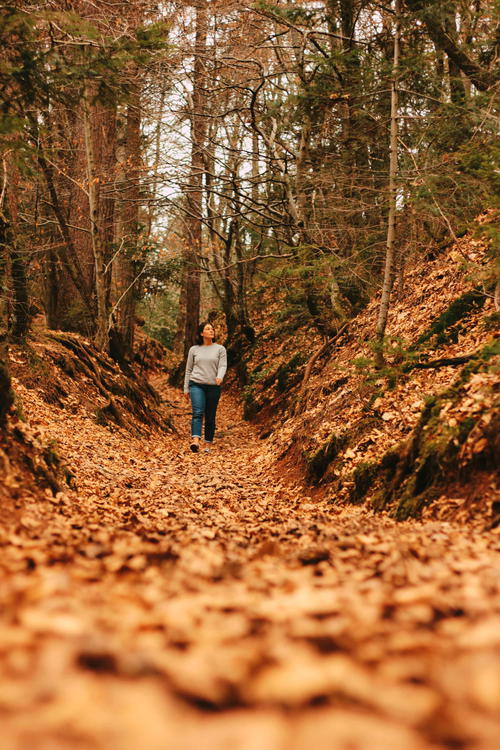
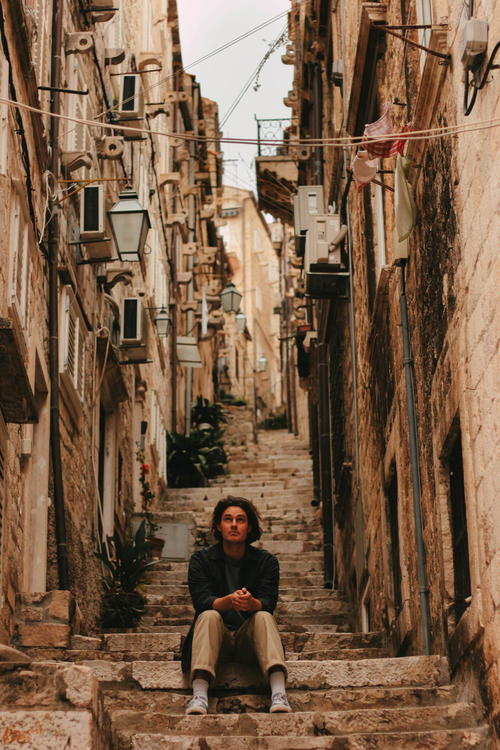
When did travel first become a part of each of your lives?
We were both huge fans of travel prior to meeting each other.
Carlie actually grew up in the U.S as a child. Her parents are travel fanatics and took two kids under two years old, and moved across the world for 10 years.
Carlie travelled through Europe and Asia as a teenager, so she had a good appreciation for travel from a very young age.
For me, travel first entered my life when I visited South Korea when I was aged six. This was definitely the ‘jumping off point’ for my love of travel: eating new food, feeling completely lost in a weird city. It was definitely intoxicating and started off the addiction nicely.
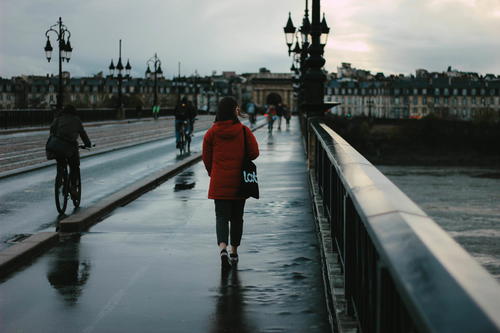
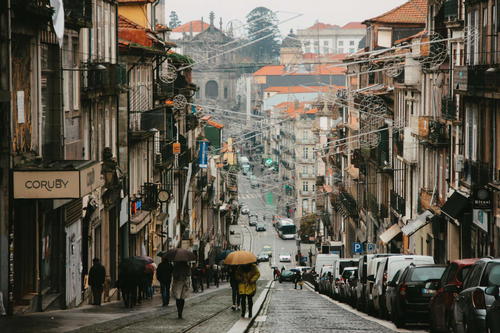
When did the idea come about to take a ‘big trip’ as a couple?
The idea of taking a ‘big trip’ together probably germinated in about 2017.
We both started our careers straight after graduating University. Carlie is a physics teacher and I’m a psychologist. We had a few personal things happen in our lives during those years that made us realise how fragile and fleeting life is, and we’d spent the bulk of our twenties working and squeezing trips in here and there.
We both thought it was time to step away from work and take a big adventure together.
We wanted to give ourselves a full year to see the world at a slower pace and make plans and decisions as we went along. Carlie floated the idea of living full-time in a campervan in Europe through winter to be able to avoid the crowds and go at our own pace and direction.
So, that’s what we did!
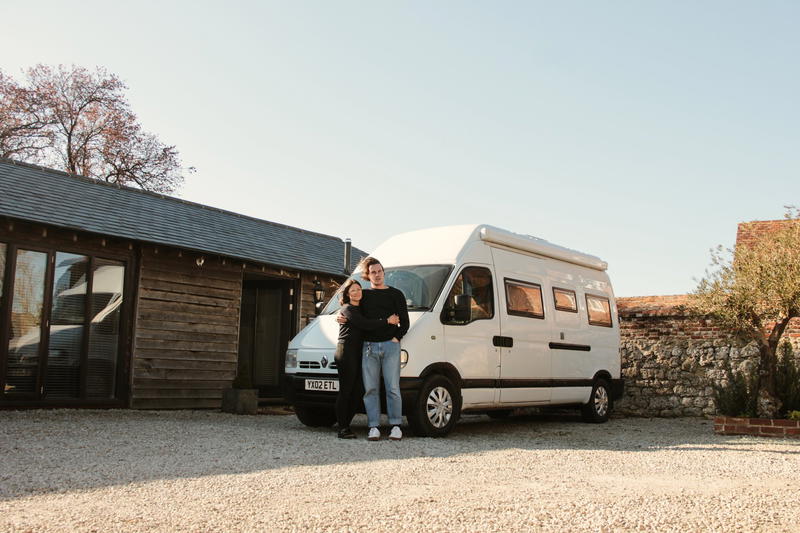
How did you decide where to go, how to budget and which travel style you’d choose?
The ‘plan’ was loose: first, England, to get a van, drive for six or seven months around Europe, then head to South and Central America for six or seven months.
We only booked a one-way ticket to London to remain as flexible as possible, allowing us to make changes on the fly, and that’s not to say we just turned up with no idea of where to go.
A lot of work and preparation went into developing ‘the list’ in the months leading up to our departure. This list was not an itinerary as such, but a broad collection of well-researched, less-traveled spots all across Europe, South and Central America.
Our priority was to stay as flexible as possible while on the road. Getting to ski and snowboard was important to us on the Europe leg, while we had some big hiking plans for South and Central America.
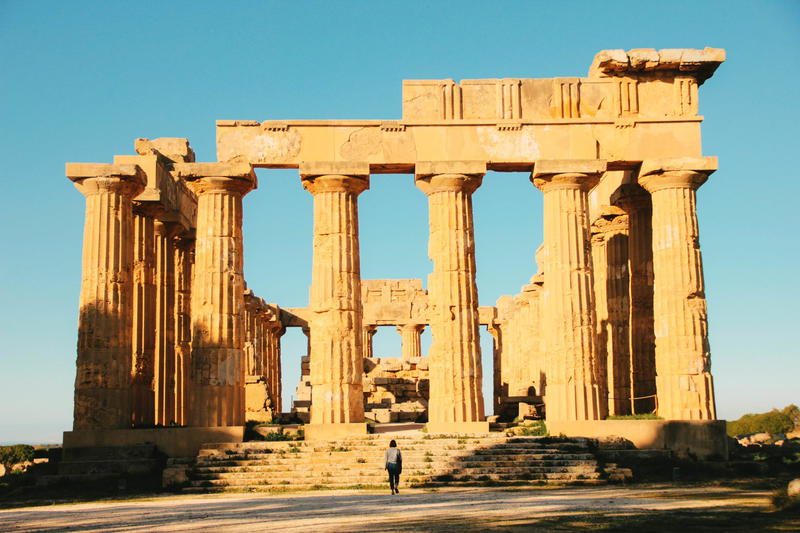
This list also included restaurants and vineyards to check out, as we’re both huge fans of good food and natural/biodynamic wine. Getting to see places like Mt. Etna, Bordeaux and Tuscany allowed us to see phenomenal parts of the world while sampling some delicious wines along the way.
In terms of budgeting, that is definitely Carlie’s sphere, as I have a laissez-faire attitude toward spending money.
She budgeted very carefully, monitoring our weekly spending through an app to ensure we didn’t overspend, which is something easily done in Europe.
We worked our butts off during the year leading up to the trip, moved back in with our families, sold possessions and cars and limited spending to essentials (although I consider wine an essential).
Carlie even took up side jobs, tutoring and working for the local University to help us save. Although the initial outlay for the van was a big one, it was one that we would recuperate at the end.
Travelling this way is so much cheaper and more convenient, as food transport and accommodation are all packed into your tiny home on wheels. We wouldn’t have been able to afford all of the things we did in Europe without the van.
Our style of travel was deliberate and slow. We tried to spend between two and 10 days in each place we visited.
Although we did a handful of ‘tourist activities’ in major cities, we tried to focus on smaller, off-the-beaten-track locations.

Our routine usually involved parking up, walking the town as far and wide as possible, checking out bars and street food, taking photos and then doing some writing. If we liked the vibe, we would stay longer, and if not, we would hit the road.
What were some of the biggest ‘wins’ you had as a couple on the road?
The trip definitely strengthened us as a couple, as we are [now] way better at communicating, far better at decision-making, and even more in love with travel (and each other) than ever before.
One of the biggest wins for us was learning to relinquish control. We both like being in control, and on any trip, you have to accept that things will go wrong.
Travelling in a van amplifies the need to accept this tenfold: tyres need replacing, plumbing leaks, engines need repair. We gradually learnt to just accept these things as they happened and to take it in stride.
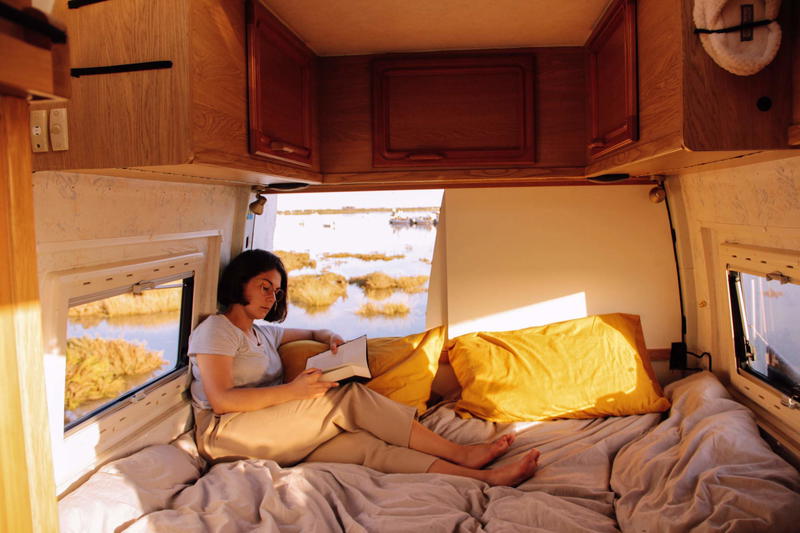
The day we both realised we had let go, a bit happened parked in a stunning spot by the sea just south of Barcelona.
The shower floor cracked under my feet, leaking water into the van. We both calmly got to finding solutions and organizing repairs through my broken Spanish. We had reached a point where we both realised the stress and anxiety that comes when things ‘don’t go to plan’ was something we could control.
That acceptance of, ‘Oh well, lets just sort it out,’ was a big turning point for sure.
Other than that, one of the other big wins that we had was building and growing our blog.
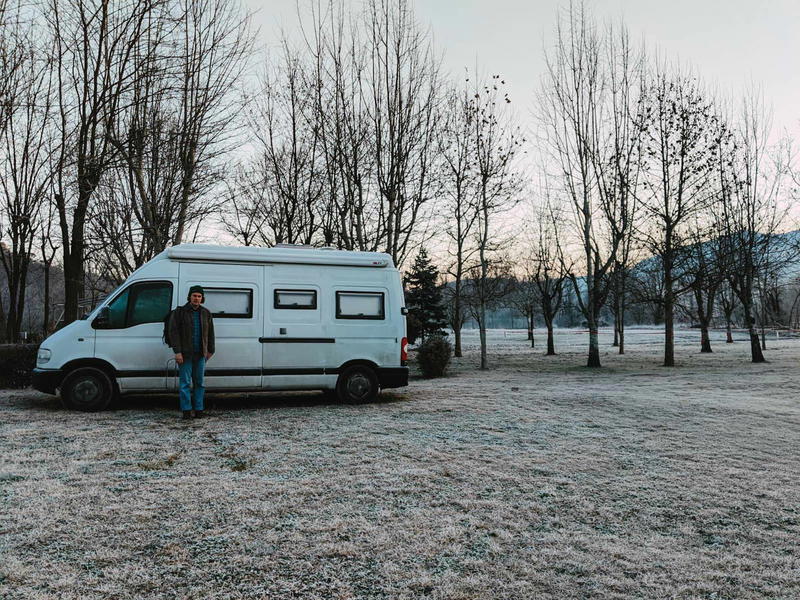
There was something so rewarding about working on this shared project of documentation, writing and photography as a couple.
Witnessing this fledgling blog, verynicetravels.com, transform into something that we’re both really proud of and continue to work on was absolutely a big win.
When did you decide to start the blog at verynicetravels.com?
Starting a blog was something that Carlie had been researching for ages, as she followed a few travel blogs already.
At first, it was just going to be a basic blog that we both contributed to, but then, we gradually decided to go a bit bigger in scale.
We wanted to have city guides, a weekly update, and general van life advice.
When we first started it, I suspect neither of us really knew how much work would be needed to get it set up with enough content; however, we’re both really glad we started it now – the opportunities that have come from it, like doing interviews with you guys, getting to cover wine fairs in Slovenia, or just meeting people has been pretty extraordinary, and certainly worth the effort of running the blog.
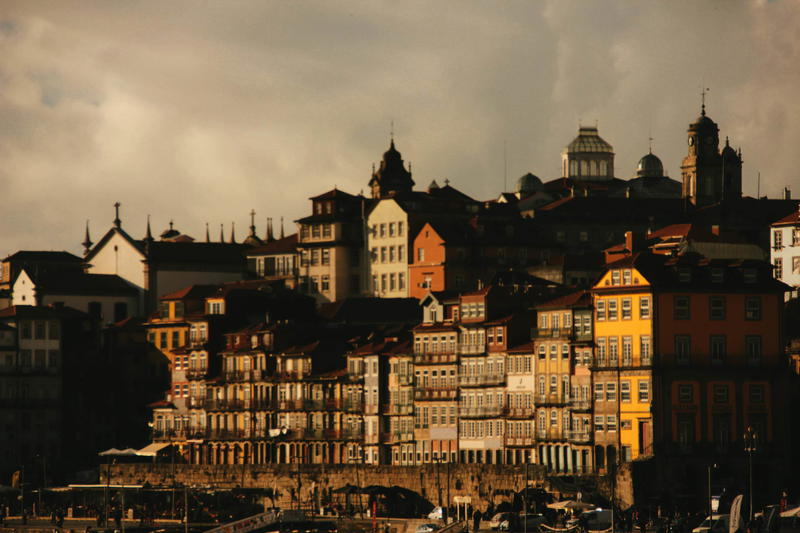
Who took the reins on photography, and did you keep learning as you went along?
At the start, I probably took the reins on the photography side of things.
I’ve been a fan of photography since high school, and have been using the same beat-up Canon for nearly ten years. That thing has seen me through Southeast Asia, South America and all through Australasia, so I’m pretty fond of it.
However, in previous trips, I haven’t really shared the photos that I’ve taken, which changed pretty quickly this time around once we started a blog and an Instagram.
Once we got going, Carlie took to photography pretty quickly, and ended up taking some of the best photos that we managed to get in during our time away. She has a superb eye for what will make a good photo, and now that she is learning how to wield a real camera, she’ll be unstoppable.

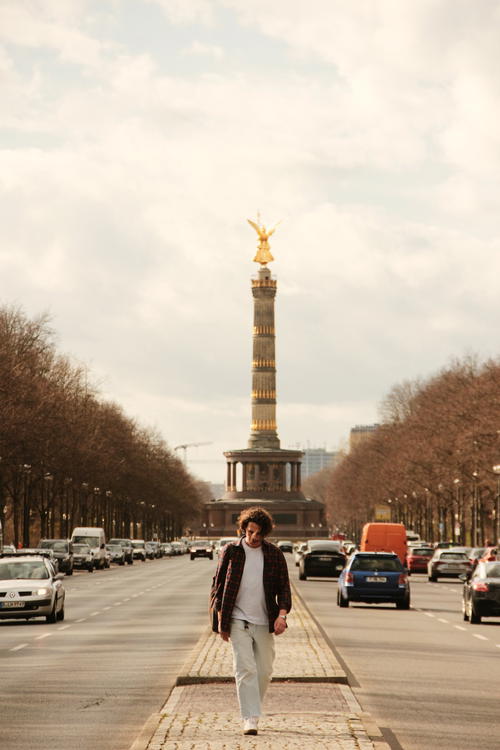
One of the coolest parts of the trip was developing and improving as photographers, particularly in working on colour and composition, something that I think we both got a lot better at over the course of our time overseas!
How did you get the idea to rent a van and try out ‘van life’? How did it go?
The idea of ‘van life’ definitely originated with Carlie. We actually spent three weeks in winter exploring the south island of New Zealand in a hire van. Carlie wanted to try out ‘van life’ before committing to doing it for six or seven months in Europe.
It was an absolute success – we were able to visit parts of the country that would have been impossible without a van, we slept on the side of sublime glacial lakes in complete solitude and drove through some of the most jaw-dropping vistas either of us have ever seen.
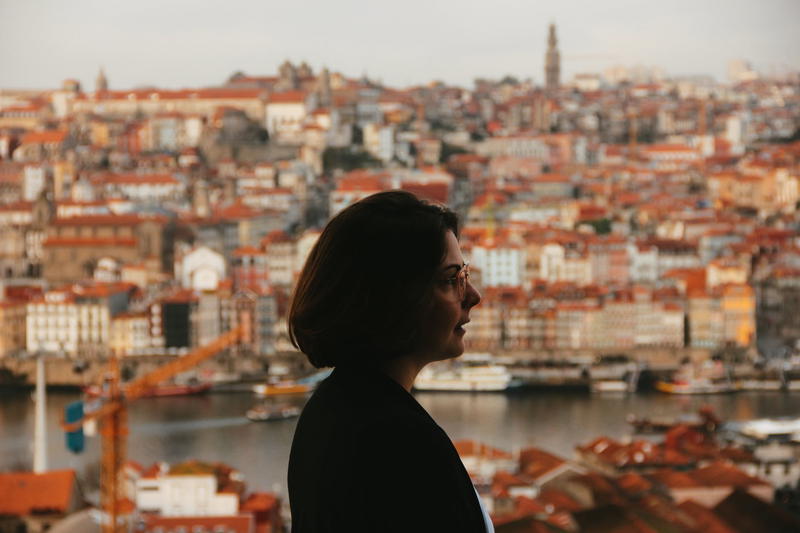
All of the worries about space, hygiene, storage and accessibility were dispelled and we had a really good feel for what we wanted when we were buying a van for Europe.
Now that we are back, after six months of living in our own van, we can’t sing its praises enough. The freedom in travel is unparalleled and the ease of access to places to which no tourists go was exactly why we wanted to live this way.
We could get a morning of skiing in Slovenia and be sat in a ruin bar in Budapest by the afternoon. We found the day-to-day of living in a van really comfortable: we had a kitchen, fridge, flushing toilet, shower and solar panel to stay off-grid.
Having our own secure space, not unpacking and repacking nor searching for transport and accommodation each day was a blessing.
The other thing we found incredible is that nine nights out of 10 we were parking up in some of the most amazing spots imaginable that we could never afford to stay in if it were an accommodation.

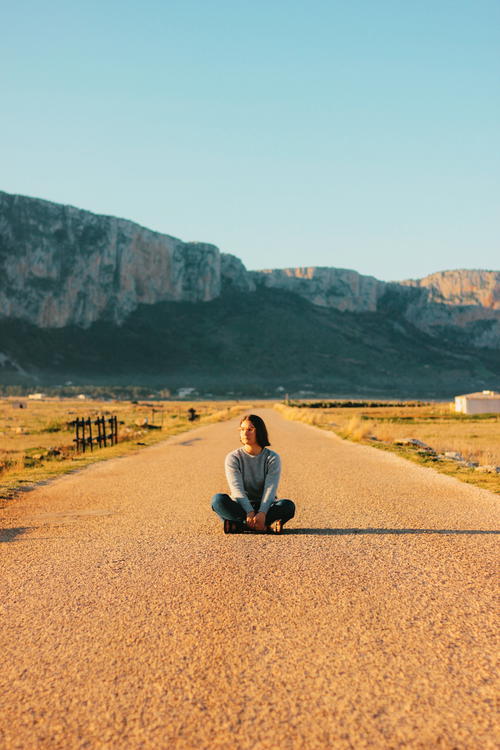
We spent a glorious couple of days on the cliffs along the Cote D’Azur in France, cooked dinner while overlooking a windswept beach in the Scottish highlands and lazed on an empty beach in the Algarve in Portugal.
Best of all, didn’t have to pay for a single spot.
Were there any challenges or set-backs during your trip (i.e. schedule changes, extraordinary events…)?
Heaps!
A dude tried to break into the van in Bratislava while we were sleeping inside, we caught an absolute creep looking into our van with binoculars from across a carpark in Sicily, we had multiple bits and pieces inside the living space need repair and the back of the van flooded when our water tank drain valve was knocked open by a lose spanner on a bumpy road.
But the most dramatic set-back of the trip happened whilst driving through a snowstorm in northern Spain. Heading west from Pamplona through some truly beautiful mountains, a severe weather warning was issued, so we decided to push on and head south to avoid being snowed in.
In the late afternoon though, with some light snow, the dash lit up with a flashing red “STOP” signal, with the engine and battery lights glowing with an error message.
Thank goodness Carlie is mechanically-minded, so she guessed that the alternator was failing, meaning we had to pull up somewhere safe ASAP.
Nowhere near any towns or cities at dusk and with a blizzard on the horizon, we diverted off the highway to the nearest town, Léon, 30km away.
We only just made it before some really troubling noises started. We had to wait out the storm over the weekend before seeing a mechanic the following Monday. We hadn’t planned on visiting Léon, and spent the weekend hitting every tapas bar in town, eating and drinking way too much with locals, so there was definitely a huge silver lining, softening the blow of the cost of repair.
At which point did COVID-19 start to affect the plans, and the place you were in?
At the end of January, we had just left northern Italy for Croatia.
At the time, our biggest concern then was if the civil unrest in South America was going to upset our plans for April.
Rereading messages with family and friends at that time, we were actually debating going to Asia instead of South America if it became too unsafe, which looking back on now seems insane.
At that time, COVID-19 wasn’t a huge concern for us, and was being called ‘Coronavirus’ or the ‘Wuhan virus’ in the media. One message to our parents from that time reads, “Not sure what our plan is — its riots vs. virus.”
As a few more care-free weeks passed as we made our way to Slovenia, news broke that the virus had reached Europe via the Milan fashion show. Concerned, but not alarmed, we continued on and by the end of February whilst in Hungary, the news coming out of Italy was starting to become more alarming. Even then, we did not have the vaguest idea of what was coming.
By early March, we were keeping a close eye on the news and on Australia’s Department of Foreign Affairs travel advice (DFAT), but didn’t notice much of a change on the ground.
Then, heading from Vienna to Bratislava, we were stopped at the border by Slovakian police and health workers to discuss COVID-19 precautions. It was pretty informal and we were allowed to continue on our way without restriction.
‘Social distancing,’ ‘lockdowns’ and ‘self-isolation’ were not yet in the world’s vernacular, and as we headed through Poland and the Czech Republic, everything was open and it felt very much business as usual.
It was when we left Prague to head for Berlin that things changed rapidly and definitely for the worse. Europe was having an explosion of cases, Italy was reporting a massive loss of life and within a matter of days, all conversations became exclusively about ‘COVID-19.’
On March 13, the Australian government increased its travel advice to level 3: ‘Reconsider your need to travel,’ and we knew we needed to start making moves to get back to the UK quickly.
Heading as far north in Germany as possible to avoid the southern border, we did some huge drives over a couple of days to get to Amsterdam, where infection rates were low and the city was still open.
A day later, the Netherlands was in lockdown and we crossed four countries in a day to get back to the UK to hand the van over to a broker and try to get flights home.
It kinda felt like that scene in Indiana Jones when he is sliding down the hallway and all the doors are snapping shut behind him. Everywhere we turned, borders were shutting, airlines were slowing down and cities were being locked down.
This was serious. Cities became ghost towns, people were dying and panic-buying was infiltrating the masses. In the space of eight days, the whole planet had changed.
How did the decision to come home unfold, and how did you arrange a last-minute flight back to Australia?
Once back in England, we knew that it was irresponsible and inconceivable to do anything but get home as soon as possible.
Trying to book flights was insanely difficult and jaw-droppingly expensive with airlines grounding their fleets and a swath of cancellations and uncertainty.
On the ferry from France to England on March 16, we heard news back home that travellers would need to self-isolate upon return and Tom Hanks had been hospitalised.
That night we booked the earliest flight we could, giving us six days in England before departure. We decided to stay out on a farm Airbnb to prepare the van for handover and ourselves for departure.
It was two days later that Australia increased its travel advice to an unprecedented level 4: ‘DO NOT TRAVEL.’
That essentially meant we had to wait to see if we would make it back before Australian border closed to commercial international flights. As the week went on, our Emirates flight was changed four times, but at least was still going ahead.
On our date of departure, we were up before dawn, relieved to see our flight was still scheduled and had been allocated a gate.
We got to check-in at 5:50 am, three hours before departure and were informed that our names did not exist in the system.
We were frantic, and we were told that our flight was cancelled. They could not refund us or offer us any assistance in rebooking to get home.
Distraught at the possibility of being stranded in Europe indefinitely, we both desperately started to try and book any other flight, no matter the cost, to try to get home.
After speaking with the amazingly helpful and compassionate ground staff at Qantas, Carlie managed to organize tickets for a week later.
Miraculously, the Qantas staff at Heathrow Airport were able to get us on a specially-scheduled flight to Sydney, the last flight leaving Heathrow that night.
The following 48 hours in transit was like a terrible, anxiety-riddled nightmare, and upon touching down in Sydney, the full flight burst into applause, something that doesn’t ever happen in Australia.
Being on the flight was really scary; there were lots of sick people on board and we have since found out that there were six confirmed cases.
Thankfully, we have been home in self-isolation for eight days [at the time of writing] and appear to be in good health!
What kind of reflections do you have now about your trip? What are the greatest lessons to share?
Reflecting on the trip now, though painful, is something we’ve both been doing a lot of.
Thinking about how much we enjoyed exploring the off-the-beaten parts of Slovenia, Croatia and Sicily really reinforces our love of wonderful places, and definitely affirms our decision to go in the first place.
We met some amazing people: wine-makers, other van-lifers, furniture-makers, farmers and fishermen.
The incredible connections made with some of these people are so memorable and now with the world in isolation, we place even more value on those interactions.
We have also reflected on the things we didn’t value as much. Places experiencing ‘over-tourism’ or mass tourism were not enjoyable for us. The joy of travel for us is really about exploring the unknown and experiencing authentic aspects of a world outside of our normal.
Visiting a place geared only at visitors and their wallets or being surrounded by curated tourist traps and hoards of cruise ship passengers on a day trip was enough to ruin a location for us.
When travelling, we value feeling challenged, we enjoy having to overcome language barriers or navigate crazy roads without GPS.
We prefer sharing a traditional meal with proud locals as they boast about their small villages and homemade wine, rather than eating at restaurants with English menus that locals can’t even afford.
Hands-down though, the biggest lesson, especially in the face of a global pandemic, was letting go of the need to be in control and expressing gratitude for the experiences we did get to have.
We have gone through a very stressful month, but have learnt that it isn’t healthy nor helpful to be stressing and worrying about something completely out of our control.
A happy traveller is one that understands that things will go wrong and is still filled with gratitude for the things they have when they do.
Travel is a privilege, not a right. It is important to be appreciative that you can travel at all. The trip we were on was something we looked forward to for a long time and although we were forced to flee home (who could possibly have foreseen that?!), we appreciate that we were privileged enough to be travelling in the first place.
Although in the heat of the moment it is easy to forget this, we always try and ground ourselves by asking, “Is this in our control or not in our control?”
We’ve learnt that the only thing that we can control for certain is the way that we respond to the problem at hand.
What good is it to become irate and upset over something if it will not change the situation? There is no use wasting our energy on fleeting misfortune, and it won’t change anything or make us feel any better. We must always remind ourselves that this too shall pass.
What we can do instead is focus on our own actions; we can work on other projects, on our well-being and on planning new adventures for the day when the world rebuilds, because although it’s hard to see now, it will.
Thank you so much to Pat and Carlie for this interview and hopeful words about the future of travel. To follow Pat and Carlie, check out their:
📓 Thanks for following our story
We use this corner of the site to share milestones and lessons from life on the road. If you're enjoying the peek behind the scenes, a coffee keeps us caffeinated to do more.
Keep the stories comingYou may also like
-
![Two women posing in front of taiwan.]()
My New York Times Travel Show (Professionals Day) Experience
What's it like to attend the New York Times Travel Show as a travel industry professional? See why we attended as a way to learn about the travel industry, travel trends for millennials and new ideas for travel.
-
![A group of people posing for a photo in a coffee shop.]()
GOAL Traveler X Half Half Travel Podcast
We were delighted when Cyd and Marc of GOAL Traveler invited us to be interviewed for their travel podcast. We discussed our experience traveling as a couple so far as digital nomads with Remote Year. We talked about our favorite travel packing hacks, along with our favorite destinations and best tips for traveling long term.
-
![a woman sitting on a bench using a laptop]()
How Krystal Pino Founded Nomad Tax: Accounting for Digital Nomads
Krystal Pino started Nomad Tax when she saw that tax services and accounting for digital nomads didn’t exist yet, after working remotely and traveling abroad. See the interview.
-
![A man is carrying a woman on his back.]()
Cyd & Marc of GOAL Traveler: Couple Adventure Motivators
Meet the adventure couple behind the GOAL Traveler blog and podcast, Cydny and Marc. They’re two adventure motivators who will give you the inspiration to “Just Go!”
-
![A person is holding up a pink polaroid camera.]()
Fujifilm Instax Mini Link Smartphone Printer NYC Launch Event
What’s the best travel-sized portable printer for phone photos? We got to test out and review the Fujifilm Instax Mini Link printer at the NYC launch and found out how it works.
-
![a woman in a green dress sitting on a stone wall]()
Arestia Rosenberg: Traveling Around the World as a Film Producer
In this interview, see how producer Arestia Rosenberg turned a love of seeing the world into destination filmmaking, with a career of docuseries storytelling work and travel.


